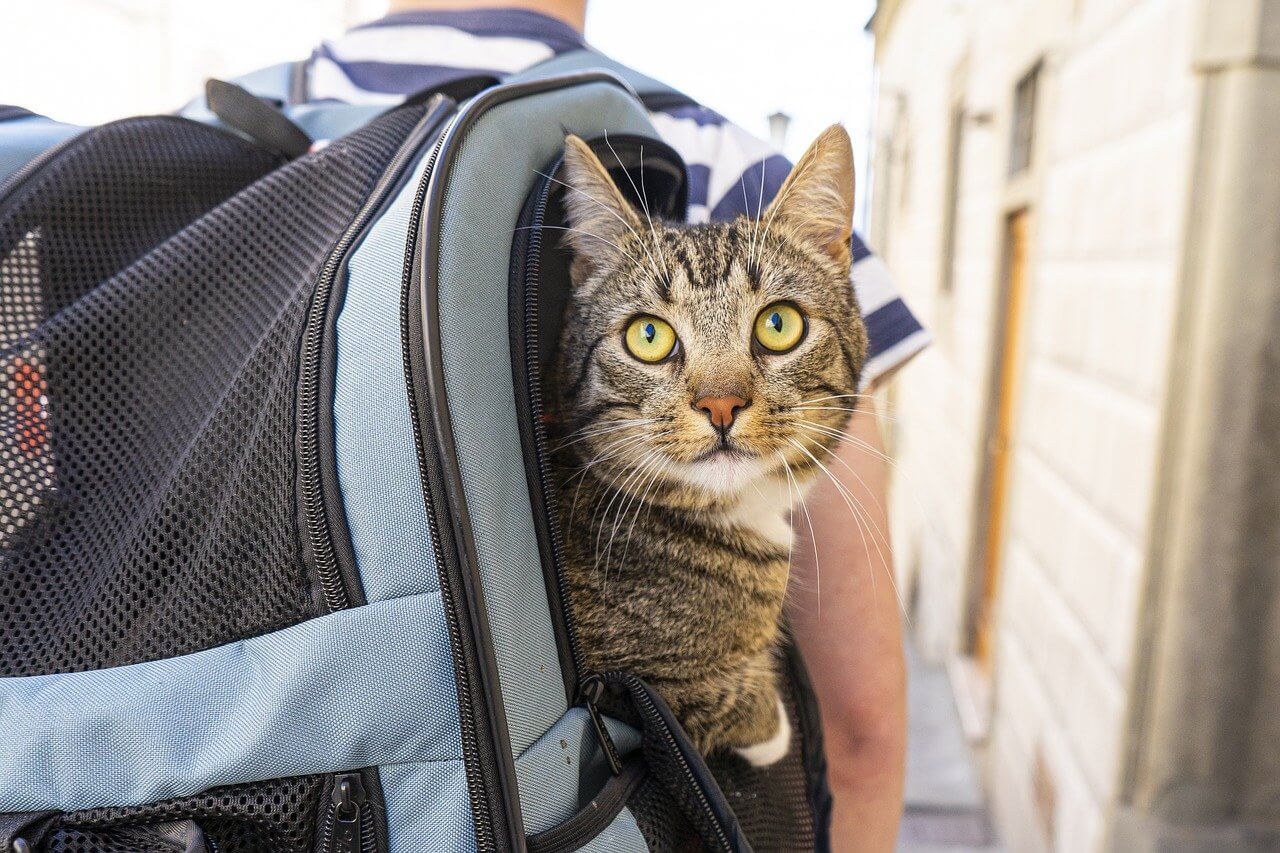
dominickvietor / Pixabay
This article is sponsored by Sleepypod, makers of innovative, safety-focused pet travel products, including the Sleepypod mobile pet bed and calming harness. Click here to explore the Sleepypod store.
Whether you’re flying cross-country or moving across town, traveling with your cat can be a daunting prospect. With the right preparation, though, traveling with a feline companion can be a great experience. Some cats prefer it to staying with a sitter back home.
But a successful journey requires thought and planning. That’s why we’ve created this guide to help you get ready and make the trip work for both you and your cat. Cats can make great travel companions, but successful travel requires the right supplies and preparation. A safe, high-quality carrier and secure harness are critical parts of keeping your cat safe during travel. You can support an anxious cat using synthetic pheromones, calming treats, or a calming harness. Managing your own stress levels can also help.
Key Takeaways
1. Pick a Great Carrier
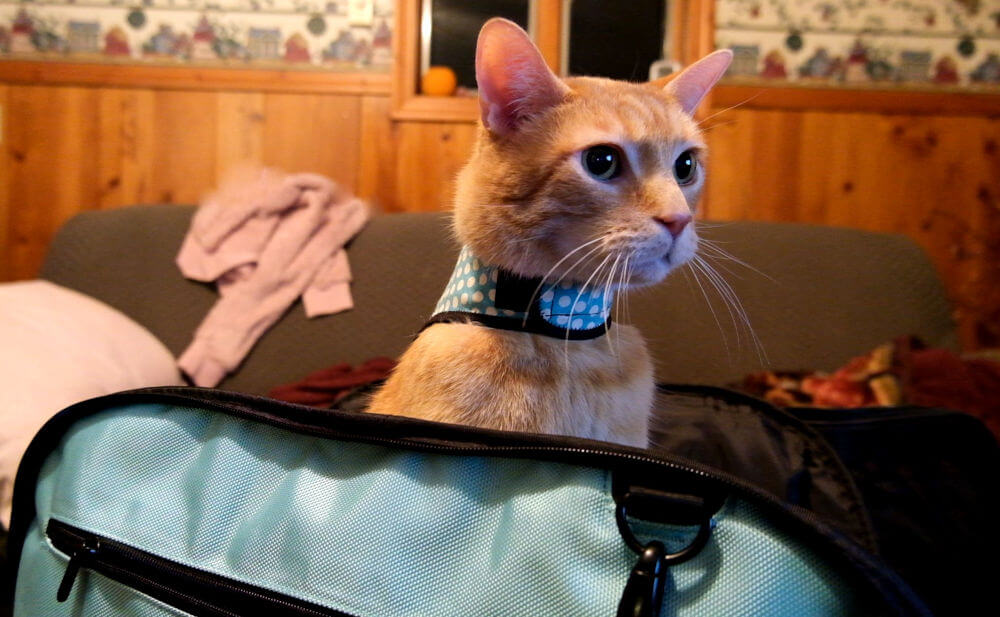
Choosing a great carrier is your first step towards a safe, comfortable journey with your cat. Mallory Crusta / Cats.com
A great carrier is an essential part of safe, successful travel with your cat. Your cat’s carrier should be well-constructed, secure, and appropriate for your mode of travel. It needs to be correctly sized so that your cat can sit, lie down and change positions comfortably.
After testing numerous carriers, we recommend Sleepypod’s products as the best on the market. This company shows a dedication to safety that goes beyond that of any other pet travel product manufacturer. Through the Sleepypod Safety Test Program, their carriers are crash-tested and certified to extend your cat’s safety in an accident. The testing meets the same standards applied to child safety restraints.
We recommend the Sleepypod Mobile Pet Bed as the best carrier for car travel and the Sleepypod Air as the best for traveling by plane. You can learn more about their carrier lineup here.
Once you have an excellent carrier, initiate a low-stress introduction, leaving it out as a bed before making any connections with the car, the vet, or vacation. Use treats to encourage your cat to explore the carrier.
2. Start Preparing Early
Successful travel with your cat starts long before you leave the driveway. While most cats are most comfortable within familiar territory, proper training from kittenhood will help them feel confident on the go.
If you anticipate travel in your cat’s future, start training them early. Take your kitten out for walks on a harness and leash, introduce them to new people, and carefully expose them to other pets. Remember that all socialization must be carefully planned and supervised to keep your kitten safe.
In the weeks leading up to the trip, make sure your cat is familiar with all of the supplies that will come out on your departure day. They should become acquainted with their carrier, harness and leash, travel litter box, and any other special accessories.
Consider getting them comfortable in the car as well—practice encouraging them into the carrier, shutting it securely, and then taking them out to the car briefly. Give plenty of praise and reward for these practice sessions to ensure your cat sees travel as a positive experience.
3. Flying or Driving? Plan Accordingly
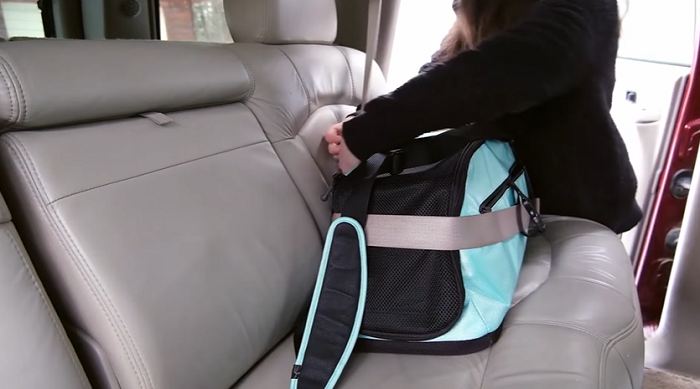
Traveling by car requires different preparation than taking a flight. Keep your travel plans in mind when preparing your cat. Mallory Crusta / Cats.com
Traveling With Your Cat by Car
Traveling by car gives you a bit more control over your schedule and your cat’s experience, allowing you to make as many stops as needed, limit your passenger list, and modify your itinerary to help your cat feel comfortable. But it comes with a few special considerations.
Use a crash-tested carrier. Strap it to the seat according to the manufacturer’s instructions, making sure that it is fully intact and ready to keep your cat safe in an accident. Once you hit the road, ensure that you have good ventilation, but watch doors and windows to prevent escape. Ensure your cat is comfortable: the base of the carrier should be level rather than tilted, and secure enough that it doesn’t move around when driving, which can exacerbate motion sickness.
Before you leave, consider turning on the air conditioner or heater to make sure that the vehicle is at a comfortable temperature for your cat. If your cat tends to get motion sickness, let your cat fast for 8-12 hours before you leave, and consider using medication as prescribed by your vet.
For more tips, read our vet-written guide to taking a road trip with your cat.
Traveling With Your Cat by Plane
Whether domestic or international, plane travel with a cat comes with some additional considerations.
Make sure that your carrier qualifies for under-seat in-cabin storage as a carry-on, checking with your individual airline to avoid any last-minute stress. We don’t recommend traveling with your cat in the cargo hold unless absolutely necessary. Again, check with your airline to confirm that in-cabin transport is an option. You’ll also want to read up on any paperwork the airline requires before a pet comes on board.
Airport security can be just as—or more—nerve-racking for cats as it is for us, so consider TSA PreCheck® to minimize time in line. The security agents will ask that you remove your cat from their carrier right before they go through the screening process, so make sure they have a harness and are ready to safely leave the carrier. Carry your cat through the X-ray machine, then return your cat to their carrier as soon as you can. Click here to read the TSA’s tips for a smooth boarding and flight experience with your pet.
Once you’re on the plane, aim for a quiet seat next to a window, and settle in for the flight. A good carrier will have a top entry door or window that allows you to pet and interact with your cat throughout your flight.
4. Create a Kitty Packing List
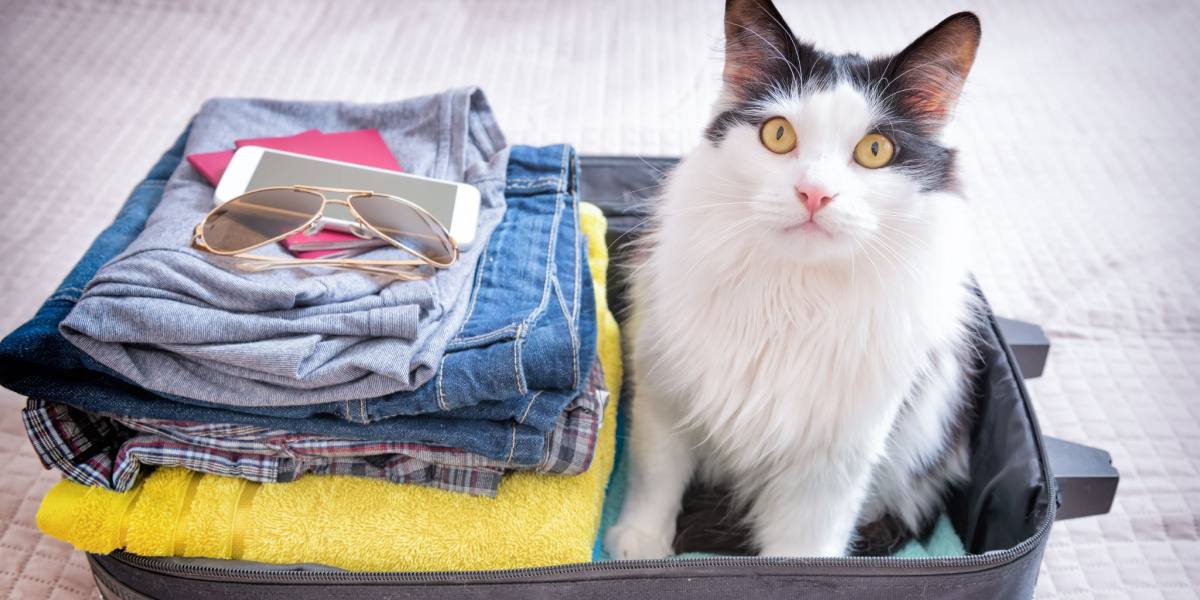
Make sure that your cat starts the trip prepared with all of their essential items. Monika Wisniewska / Shutterstock.com
In addition to your carrier, harness, and leash for safety, a few additional items should come along with you and your cat.
Make sure your cat has enough food and water to last them through the trip, and pack familiar bowls so they can eat and drink. We recommend having some extra supplies accessible, in case of travel delay. Bring a disposable litter box with your cat’s usual litter. Since accidents can happen during long travel days, line the litter box with a pee pad for safety.
Items to Pack
- Carrier
- Harness and leash
- Absorbent pee pads
- Medical and insurance documents including contact information for their usual veterinarian
- Vaccination certificates
- Any recent lab work that may be relevant
- Any medications your cat needs, with prescriptions from your vet
- The same food they normally eat at home
- Familiar food and water dishes
- If possible, water from home—water from other sources may taste strange to your cat
- Familiar cat litter
- A familiar blanket for comfort
- A collar and identification with up-to-date information
- A cat activity tracker, if desired
- If you’re staying at your destination for a while, a temporary ID tag with your new address may be a good idea
In addition to these essential items, check up on your cat’s records. Make sure they’ve received the latest round of essential vaccines and confirm that the information on their microchip is up to date.
5. Bring Pieces of Home
Cats connect with places by scent. Bringing items that smell like home will help your cat feel safe both during transport and at your destination. Items that tend to be saturated with your cat’s smell include blankets and bedding they sleep on, beloved toys, litter, and scratching surfaces.
When you arrive at your destination, try to create a home environment. Place the food and water bowls in a similar arrangement to that at home, and put your cat’s carrier down as a bed. Make sure your cat has a litter box full of familiar litter. If you’re traveling to visit family or friends, consider having them set up a sanctuary room before you arrive.
6. Use Calming Aids as Needed
Calming products can help to manage your cat’s stress levels during the trip. An easy place to start is with your cat’s harness. Sleepypod’s Martingale Calming Harness secures and soothes at once, wrapping evenly around the body in a way that may help alleviate anxiety.
Calming pheromone products use synthetic pheromones to make your cat feel safe and at home. Sprays or wipes may be used inside of your cat’s carrier before you leave and re-applied multiple times during your journey. A pheromone calming collar may also help.
Calming supplements are also available, but they are less well-researched and don’t show as much promise. Some cats who are very stressed may benefit from a prescription anti-anxiety medication like buprenorphine or gabapentin. Talk with your veterinarian, and be sure to do a trial run at home so you’ll know how your cat responds.
7. Be Patient!

Remember that your cat can feel and feed off of your stress. Manage your own anxiety to make the trip pleasant for your cat. Africa Studio / Shutterstock.com
Even with the calmest feline traveler, going for a trip with your cat can be stressful. For both your and your cat’s benefit, try to manage your own stress levels, and be patient!
Planning in advance and creating a rough contingency plan will help you to better cope with unexpected challenges. Once you’re on the road or in the air, don’t forget to take a deep breath and enjoy this special time with your cat.
A Final Word of Caution
Remember that travel is not right for all cats, especially ones who are shy or anxious. Don’t assume that, just because they love spending time with you, your cat will want to go on a long vacation at your side. In many—if not most—cases, they’d be much happier staying back home.
If you decide to leave your cat, a trustworthy cat sitter is usually the best low-stress alternative. Click here to read our article on whether you should board your cat or leave them at home.
Frequently Asked Questions
How do you travel long distances with a cat?
With the right preparation, your cat can join you for journeys of any length. Pack a great carrier, harness and leash, litter box, food and water, and any paperwork your cat needs. Ensure that you can stop at cat-friendly hotels along the way, and be sure to bring little pieces of home to make your cat feel safe.
How long can cats travel in a car?
At most, a cat can remain in the same space for about 6 hours. For trips longer than 6 hours, aim to take a few breaks to let your cat stretch their legs, use the litter box, and get something to drink and eat as needed.
Can a cat ride in a car without a carrier?
Cats should never travel in the car unrestrained. Besides being in greater danger in case of an accident, unrestrained cats are at a higher risk of escaping the car through doors or windows. They’re also a hazard to the humans in the car, potentially distracting the driver or getting under the pedals. Always keep your cat secured in a high-quality carrier during your trip.







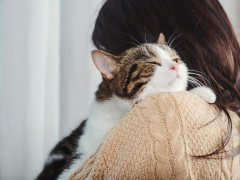
Thank you so much! This article was exactly what I was looking for when traveling with my little buddy.